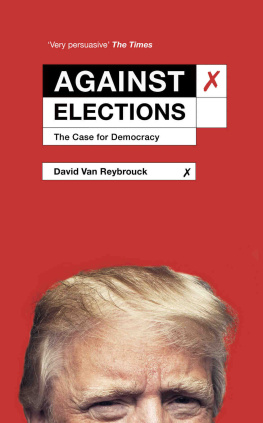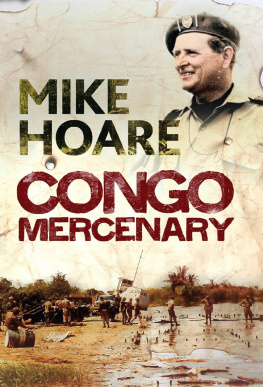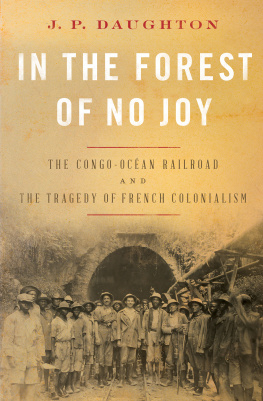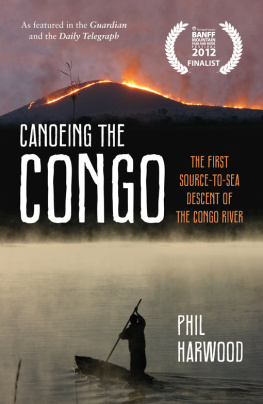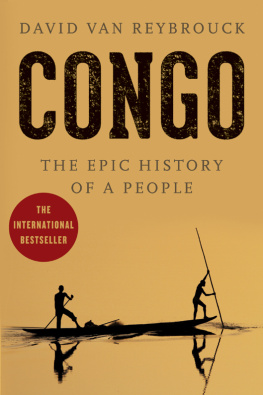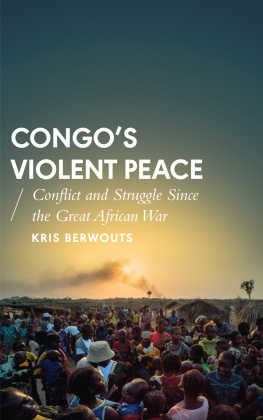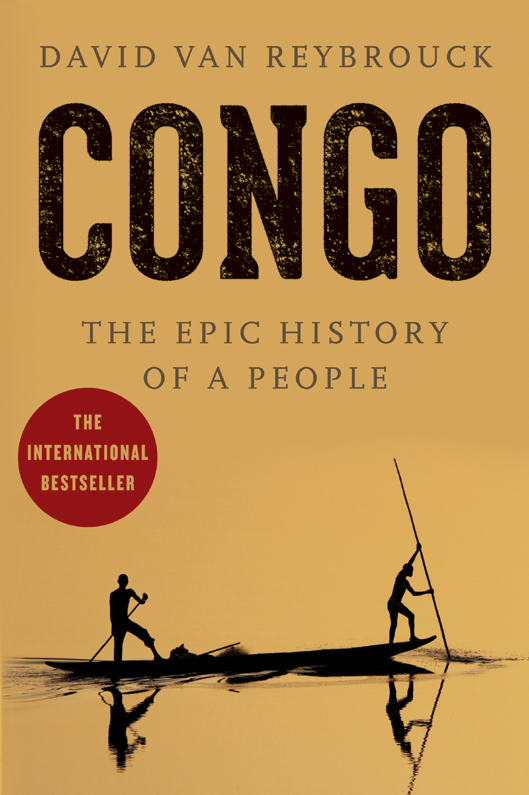MAP 1: GEOGRAPHY

MAP 2: POPULATION, ADMINISTRATION, AND RAW MATERIALS

Le Rve et lOmbre taient de trs grands camarades.
(The dream and the shadow were the best of comrades)
Badibanga, Llephant qui marche sur des ufs (Brussels, 1931)
la mmoire dtienne Nkasi (1882?2010), en reconnaissance profonde de son tmoignage exceptionnel et de la poigne de bananes, quil ma offerte lors de notre premire rencontre.
Et pour le petit David, n en 2008, fils de Ruffin Luliba, enfant-soldat dmobilis, et de son pouse Laura, qui ont bien voulu donner mon nom leur premier enfant.
(To the memory of tienne Nkasi [1882?2010], deeply grateful for his exceptional testimony and for the handful of bananas that he offered me when we first met.
And for little David, who was born in 2008, the son of the demobilized child-soldier Ruffin Luliba and his former wife, Laura, who were so kind as to give my name to their first child.)
CONTENTS
N O ONE KNOWS EXACTLY WHEN DISASI MAKULO WAS BORN. But then neither did he. I was born in the days when the white man had still not arrived in our area, he told his children many years later. We didnt know then that there were people in the world with skin of a different color. It must have been around 187072. He died in 1941. Not long before, he had dictated his lifes story to one of his sons. It would appear in print only in the 1980s; twice in fact, in Kinshasa and again in Kisangani, but Zare, as Congo was called in those days, was as good as bankrupt. The publications were sober, with limited print runs and distribution. And that is unfortunate, because the life story of Disasi Makulo is above all a fantastic adventure. To understand the last quarter of the nineteenth century in Central Africa there is no better guide than Makulo.
Where Disasi was born, however, he knew very well: in the village of Bandio. He was the son of Asalo and Boheheli, a Turumbu tribesman. Bandio lay in the district of Basoko, now Orientale province. The heart of the equatorial forest, in other words. Aboard the boat from Kinshasa to Kisangani, a few weeks journey upstream along the Congo, one passes on the port side a few days before arrival the large village of Basoko. It is on the northern bank, at the confluence with the Aruwimi, one of the Congos larger tributaries. Bandio is to the east of Basoko, a ways back from the river itself.
His parents were not fishing folk; they lived in the jungle. His mother raised manioc. With her hoe or digging tool she would chop at the earth to pry loose the thick tubers. She lined them up to dry in the sun and, a few days later, ground them to flour. His father worked with palm oil. Climbing high into the trees with his machete, he chopped off the bunches of greasy nuts. Then he would press them until the lovely juice ran out, a deep orange, a sort of liquid copper that has added to the regions wealth since time immemorial. That palm oil could be used to trade with the fishermen along the river. Commercial ties had existed for centuries between the riverine inhabitants, who had fish in abundance, and the people of the forest with their surpluses of palm oil, manioc, or plantains. The result was a balanced diet: the protein-rich fish was taken to the rain forest, the starchy crops and vegetable oil were left on the banks.
Bandio was a relatively insular world. The radius of activity covered in a human lifetime was limited to a few dozen kilometers. People sometimes visited another village to attend a wedding or arrange an inheritance, but most of them left their region seldom or never. They died where they were born. When Disasi Makulo entered the world with a shriek, the villagers of Bandio knew nothing of the outside world. They knew nothing of the permanent presence of the Portuguese a thousand kilometers to the west, along the Atlantic, nor in fact of the existence of an ocean. The Portuguese colony of Angola had lost much of its splendor, as had Portugal itself, butfor Africans as wellPortuguese remained the major trading language along the coast south of the mouth of the Congo. Nor did Disasis people know that, since the eighteenth century, the British had taken over the trade of the Portuguese along the Congos lower reaches and embouchure. That the Dutch and the French had settled there as well: they could never have guessed that, for none of those Europeans ever made their way inland. They remained on the coast and the area immediately behind it, waiting till the caravans led by African traders reached them with their goods from the interior: ivory in particular, but also palm oil, peanuts, coffee, baobab bark, and pigments such as orchil and copal. Not to mention slaves. Although the trade in human beings had been abolished throughout the Western world in those years, it went on in secret for quite some time. The Westerners paid with precious cloth, bits of copper, gunpowder, muskets, and red or blue pearls or rare seashells. This latter commodity was no act of clever Western fraud. As with official coinage, those shells were piece goods of great value that could be transported easily and were impossible to counterfeit. But Bandio was too far away to see much of that. If such a white, gleaming shell or bead necklace actually happened to make it to their area, no one knew exactly where it came from.
Newborn Disasis fellow villagers may have known nothing about the Europeans on the west coast, but they were even less informed about the great upheavals taking place more than a thousand kilometers to the east and north. Beginning in 1850, the Central African rainforest had also attracted the attention of merchants from the island of Zanzibar, as well as from the African east coast (present-day Tanzania) and even from two thousand kilometers away in Egypt. Their interest was prompted by a natural raw material that had been valued around the world for centuries as a luxury good for the manufacture of princely Chinese tablets, Indian figurines, and medieval reliquaries. That material was ivory. High-grade ivory was found in huge quantities in the African interior. The tusks of the African elephant comprised the largest and purest pieces of ivory in the world, weighing up to seventy kilos and more. Unlike the Asian elephant, already rare by that time, the female of the African species bore tusks as well. In the mid-nineteenth century this seemingly inexhaustible treasure trove was the subject of increasingly close perusal.
In the northeast of what would later become Congo, where the rain forest meets the savanna, traders from the Nile Valley were active: Sudanese, Nubians, and even Egyptian Copts. Their clientele lived as far away as Cairo. The traders traveled to the south by way of Darfur or Khartoum. Slaves and ivory were the major export products, razzias and hunting parties the principle form of acquisition. By 1856 the entire trade had gradually entered the hands of a single individual: al-Zubayr, a powerful trader whose empire in 1880 extended from Northern Congo to Darfur. Officially, his trading zone was a province of Egypt; in practice, it comprised an empire unto itself. The Arab influence spread all the way to southern Sudan.
But it was above all Zanzibar, an unsightly island in the Indian Ocean off the coast of present-day Tanzania, that played a crucial role. When the sultan of Oman settled there in 1832 to control the flow of trade in the Indian Ocean, the move had far-reaching consequences for all of eastern Africa. Zanzibar, itself rich only in coconuts and cloves, became the global transfer table for slaves. The island exported to the Arabian Peninsula, the Mideast, the Indian subcontinent, and China.


